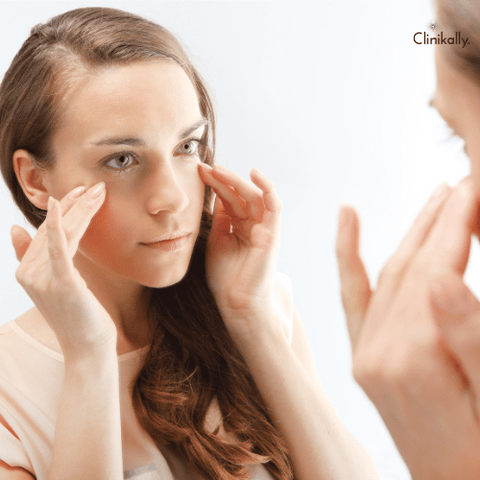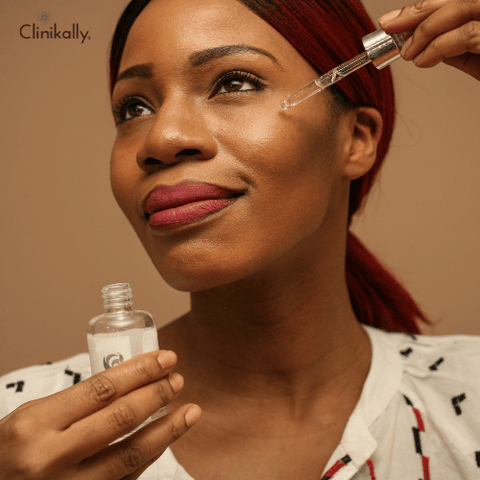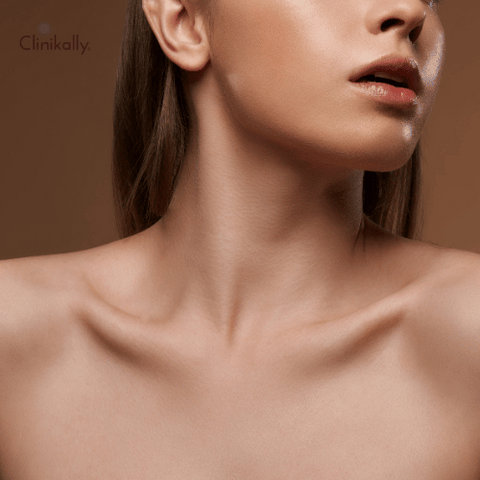Ferulic acid and niacinamide are two powerful skincare ingredients that, when combined, can provide a variety of skin benefits. Ferulic acid is a plant-based antioxidant, whereas niacinamide is a type of vitamin B3 that can improve skin texture and reduce inflammation. Ferulic acid and niacinamide, when combined, can produce successful skincare products that protect the skin from free radicals, brighten the skin, fight ageing, and calm the skin. For maximum efficacy, look for skincare products that contain both of these ingredients.
Understanding Ferulic Acid and Niacinamide

Ferulic acid and niacinamide are two popular skincare ingredients. Here's a quick rundown of each ingredient and its benefits:
-
Ferulic acid: Ferulic acid is an antioxidant that is found in plant cell walls. Because of its ability to neutralise free radicals and protect the skin from environmental stressors such as pollution and UV radiation, it is frequently used in skincare products. Furthermore, ferulic acid can help increase collagen production, resulting in firmer, more youthful-looking skin.
-
Niacinamide: Niacinamide is a type of vitamin B3 that has a number of skin benefits. It has anti-inflammatory properties that can calm irritated skin and help the skin function as a barrier, increasing hydration and reducing transepidermal water loss. Niacinamide is also well-known for its ability to reduce the appearance of hyperpigmentation and fine lines, making it an effective anti-aging ingredient.
Ferulic acid and niacinamide, when used together, can provide even more benefits to the skin. These two ingredients work together to protect the skin from oxidative stress, brighten the complexion, and reduce inflammation. For maximum efficacy, many skincare products, such as serums and moisturisers, now contain both ferulic acid and niacinamide.
Ferulic Acid: A Potent Antioxidant for Skin Protection
Ferulic acid is a powerful antioxidant that has a variety of skin benefits. Here are some of the ways ferulic acid can protect and improve skin:
-
Neutralises free radicals: Ferulic acid is a potent antioxidant that can combat free radicals in the skin. Free radicals are unstable molecules that can harm skin cells and accelerate ageing.
-
Boosts the effectiveness of other antioxidants: Ferulic acid, when combined with other antioxidants like vitamin C and vitamin E, can boost their effectiveness and provide even more protection against free radicals.
-
Protects against UV damage: Ferulic acid has been shown to protect the skin from UV damage. This can help to ward off sun damage like wrinkles and hyperpigmentation.
-
Enhances collagen production: Ferulic acid can help stimulate collagen production in the skin, resulting in firmer, younger-looking skin.
-
Reduces inflammation: Because of its anti-inflammatory properties, ferulic acid can help calm irritated skin and lessen its redness.
Ferulic acid is a powerful antioxidant that has a variety of skin benefits. Look for ferulic acid-containing skincare products, such as serums and moisturisers, to help protect and improve your skin.
Niacinamide: Versatile Vitamin B3 for Skin Health
Niacinamide is a versatile form of vitamin B3 that has a variety of skin benefits. Here are some of the ways niacinamide can benefit skin health:
-
Improves skin barrier function: Niacinamide can help improve the skin's barrier function, which aids in moisture retention and the prevention of transepidermal water loss. This can result in increased hydration and a reduction in the appearance of fine lines and wrinkles.
-
Reduces inflammation: Niacinamide's anti-inflammatory properties can help calm irritated skin and lessen the redness.
-
Reduces hyperpigmentation: By preventing the transfer of melanin to the skin's surface, niacinamide can help lessen the appearance of hyperpigmentation, including dark spots and melasma.
-
Reduces pore appearance: Niacinamide can minimise pores by controlling sebum production and enhancing skin texture.
-
Anti-aging: Niacinamide has been demonstrated to increase skin elasticity and collagen production, thereby reducing the appearance of fine lines and wrinkles.
Niacinamide is a versatile ingredient that can benefit skin health and appearance in a variety of ways. To reap the benefits of niacinamide, look for skincare products containing it, such as serums and moisturisers.
Individual Benefits of Ferulic Acid and Niacinamide
Ferulic acid and niacinamide are both potent skincare ingredients with distinct skin benefits. Here's a closer look at each ingredient's advantages:
Benefits of Ferulic Acid:
-
Ferulic acid is a strong antioxidant that can shield the skin from free radicals and environmental stressors.
-
Ferulic acid has been demonstrated to protect skin from UV ray damage, which can result in early ageing and skin cancer.
-
The appearance of fine lines and wrinkles may be improved by using ferulic acid to stimulate the skin's collagen production.
-
Redness can be reduced and irritated skin can be soothed thanks to the anti-inflammatory properties of ferulic acid.
Benefits of Niacinamide:
-
Niacinamide can help the skin's barrier work better, which can help the skin hold onto moisture and stop transepidermal water loss.
-
Niacinamide can aid in the reduction of hyperpigmentation, such as dark spots and melasma.
-
Niacinamide has anti-inflammatory properties that may help to lessen skin irritation and redness.
-
Niacinamide can reduce the appearance of pores by controlling sebum production and enhancing skin texture.
-
Niacinamide has anti-aging properties that can help reduce the appearance of fine lines and wrinkles by increasing skin elasticity and collagen production.
Both ferulic acid and niacinamide have a variety of skin benefits, and when used together, they can provide even more protection and improvement. Your skin's health and appearance can be enhanced by using skincare products that contain both ingredients.
Can You Use Ferulic Acid and Niacinamide Together?

Yes, you can use ferulic acid and niacinamide together in your skincare routine. In fact, combining these ingredients can provide even more benefits for the skin. Ferulic acid and niacinamide complement each other well because they both provide antioxidant protection and can help reduce skin inflammation. Furthermore, when combined with ferulic acid, niacinamide can help increase its effectiveness. To include both ingredients in your skincare routine, look for products that contain both niacinamide and ferulic acid. Serums, moisturisers, and other treatment products may be included. When using multiple products containing these ingredients, it is essential to layer them in the proper order to ensure maximum absorption and effectiveness. As with any new skincare product, you should patch test it before using it on your entire face, and start with a lower concentration of the active ingredients to ensure that your skin can tolerate them.
Assessing Ingredient Compatibility
The compatibility of ingredients is an important step in developing an effective skincare routine. When determining the compatibility of skincare ingredients, consider the following factors:
-
pH level: The pH of skincare products can have an impact on how well ingredients are absorbed by the skin. Vitamin C, for example, works best at a pH of around 3.5, whereas AHAs (alpha-hydroxy acids) work best at a pH of 3 to 4.5. It's critical to make sure the pH of your skin care products is appropriate for the ingredients you're using.
-
Concentration: The concentration of active ingredients in skincare products can affect how well they interact with one another. If you're using multiple products that contain the same active ingredient, such as vitamin C, make sure the concentration isn't too high, as this can cause irritation and sensitivity.
-
Texture: The texture of skincare products can influence how well they interact with one another. Water-based products, for example, may not layer well with oil-based products because they repel each other. When layering skincare products in your routine, it's critical to consider their texture.
-
Time of use: The order in which skin care products are used can affect how well they work together. Some ingredients, such as AHAs and retinoids, can, for example, cause sun sensitivity. It is critical to apply these ingredients at night and to wear sunscreen during the day.
-
Skin type and concerns: The compatibility of skin care ingredients can also be affected by your personal skin type and concerns. If you have dry skin, for example, you should avoid using ingredients that can be drying, such as alcohol or certain types of exfoliants.
You can evaluate the compatibility of skincare ingredients and create a routine that works well for your particular needs by taking these considerations into account. It's also a good idea to patch-test new products before using them all over your face to ensure that your skin can tolerate them.
Benefits of Combining Ferulic Acid and Niacinamide
There are several skin advantages to using ferulic acid and niacinamide together in your skincare regimen. Here are some of the advantages of combining these ingredients:
-
Both ferulic acid and niacinamide are powerful antioxidants that can shield the skin from free radical damage. When combined, they can provide even more antioxidant protection.
-
Niacinamide can help reduce the appearance of hyperpigmentation such as dark spots and melasma, whereas ferulic acid can protect the skin from further damage that can lead to hyperpigmentation.
-
Niacinamide can help to reduce the appearance of pores and improve skin texture, whereas ferulic acid can stimulate collagen production, improving the overall appearance of the skin.
-
Niacinamide and ferulic acid both have anti-inflammatory properties that can help lessen skin irritation and redness.
-
It has been demonstrated that ferulic acid shields the skin from UV damage, which can result in early ageing and skin cancer. These ingredients can offer even more defence against UV deterioration when combined with niacinamide, which can enhance the skin's barrier function.
Your skin can gain a number of advantages from combining ferulic acid and niacinamide in your skincare regimen, including improved texture, decreased inflammation, and increased defence against UV radiation and free radical damage.
How to Incorporate Both Ingredients into Your Skincare Routine
Here are some steps to take if you want to incorporate both ferulic acid and niacinamide into your skincare routine:
-
Start by cleansing your skin with a mild cleanser to get rid of any dirt, oil, or makeup.
-
Use a toner (optional) to help balance the pH levels of your skin. If you do, use it after cleansing.
-
Apply niacinamide serum to the skin and gently massage it in until it is completely absorbed. This will lessen hyperpigmentation and help to improve the texture of your skin.
-
Niacinamide serum should be applied first, then a ferulic acid serum should be applied on top, gently massaging it into the skin. This will encourage the production of collagen and aid in antioxidant protection.
-
After your serums have absorbed completely, moisturise your skin to help keep it hydrated and help lock in moisture.
-
In order to protect your skin from UV rays during the day, you should use sunscreen. In order to provide even more protection, look for a sunscreen that includes antioxidants like ferulic acid or vitamin C.
The order or frequency of using these products may need to be modified based on your unique needs because everyone's skin is different. Additionally, to make sure your skin can tolerate new products before using them on your entire face, patch test them and start with a lower concentration of the active ingredients.
Tips for Using Ferulic Acid and Niacinamide Safely and Effectively

Here are some pointers for correctly and safely utilising niacinamide and ferulic acid:
-
Patch test: Patch test any new product containing ferulic acid or niacinamide on a small area of your skin to check for any adverse reactions or irritation.
-
Start slow: Begin with a lower ferulic acid and niacinamide concentration and gradually increase it as your skin adjusts. This will help to avoid any irritation or sensitivity.
-
Use sunscreen: Niacinamide and ferulic acid can both assist in preventing skin damage from UV rays, but they should not be used in place of sunscreen. Wear sunscreen constantly during the day to completely shield yourself from dangerous UV rays.
-
Follow instructions: Follow the manufacturer's instructions for each product you use, including how often to use it, how much to use, and when to use it.
-
Store properly: Keep ferulic acid and niacinamide-containing goods out of the sun and in a cool, dry location. Their effectiveness will be preserved as a result.
-
Avoid combining with certain products: Ferulic acid and niacinamide's effectiveness may be lowered by products like acids and retinoids. Use them at different times of the day or avoid using them together.
-
Be patient: Using ferulic acid and niacinamide can take several weeks before you notice any changes. To get the best results from your skincare routine, be persistent and patient.
By following these guidelines, you can use ferulic acid and niacinamide to improve the health and appearance of your skin in a safe and effective manner.
Identifying Your Skin Type and Concerns
The first step in creating a successful skincare routine is determining your skin type and concerns. Here are some pointers to help you figure out your skin type and concerns:
-
Skin Type: There are four different types of skin: oily, dry, combination, and normal. Wash your face with a gentle cleanser and wait 30 minutes to determine your skin type. You most likely have dry skin if your skin feels tight and dry. You most likely have oily skin if your skin is oily and shiny. You most likely have combination skin if your skin is oily in the T-zone (forehead, nose, and chin) and dry elsewhere. Normal skin is defined as skin that feels comfortable and balanced.
-
Skin Concerns: Acne, ageing, dark spots, dryness, dullness, sensitivity, and uneven texture are all common skin concerns. Examine your skin carefully and identify any issues. This will assist you in selecting the best skincare products.
-
Consult a dermatologist: If you're unsure about your skin type or have concerns, talk to a dermatologist. They can assist you in determining your skin type and developing a customised skincare routine based on your specific requirements.
You can select skincare products that are specially made to address those problems once you've identified your skin type and skin-related concerns. This will help you achieve beautiful, healthy skin.
Introducing Ferulic Acid and Niacinamide Gradually
To prevent sensitivity or irritation, it's essential to gradually introduce ferulic acid and niacinamide. Here are some pointers on how to incorporate these ingredients into your skincare routine:
-
Start with a low concentration: Begin with a product with a low ferulic acid and niacinamide concentration, such as 0.5% or 1%. This will allow your skin to gradually adjust to the ingredients.
-
Use once a day: Apply the product once daily, either in the morning or at night, to start. This will allow your skin to adjust to the new ingredients before increasing the frequency.
-
Monitor for irritation: Keep an eye out for irritation symptoms such as redness, itching, or stinging. If you notice any of these symptoms, stop using the product right away and give your skin a few days to recover before trying again.
-
Increase frequency: After your skin has gotten used to the product, you can progressively use it more frequently. This may take several weeks, so be patient and take your time.
-
Be consistent: When introducing new skincare products, consistency is essential. To get the best results, use the product as recommended on a regular basis.
By introducing ferulic acid and niacinamide gradually, you can reduce the risk of sensitivity and irritation while still allowing your skin to benefit from them.
Balancing Active Ingredients with Hydration and Skin Barrier Care
Maintaining healthy, radiant-looking skin requires balancing active ingredients with hydration and skin barrier care. Here are some pointers to help you achieve this balance:
-
Hydrate from the inside out: Consuming a diet high in fruits and vegetables and drinking lots of water can help keep your skin hydrated and healthy from the inside out.
-
Use a gentle cleanser: Use a gentle, pH-balanced cleanser to remove dirt and oil without stripping your skin of its natural oils.
-
Add hydration to your routine: To add moisture to your skin, use hydrating products such as toners, essences, and serums. Look for ingredients that attract and retain moisture, such as hyaluronic acid and glycerin.
-
Protect your skin barrier: Your skin barrier helps to keep irritants and moisture out of your body. Use skincare products with ingredients that restore your skin's barrier, like ceramides and fatty acids.
-
Alternate active ingredients: To prevent over-exfoliating or over-stimulating your skin, think about alternating the active ingredients you use, such as ferulic acid and niacinamide. For instance, you could take niacinamide at night and ferulic acid in the morning.
-
Listen to your skin: Take note of how your skin reacts to various products and adjust your routine accordingly. If your skin is dry or irritated, reduce the number of active ingredients you use and instead concentrate on hydration and barrier care.
You can help keep your skin healthy, hydrated, and glowing by balancing active ingredients with hydration and skin barrier care.








































